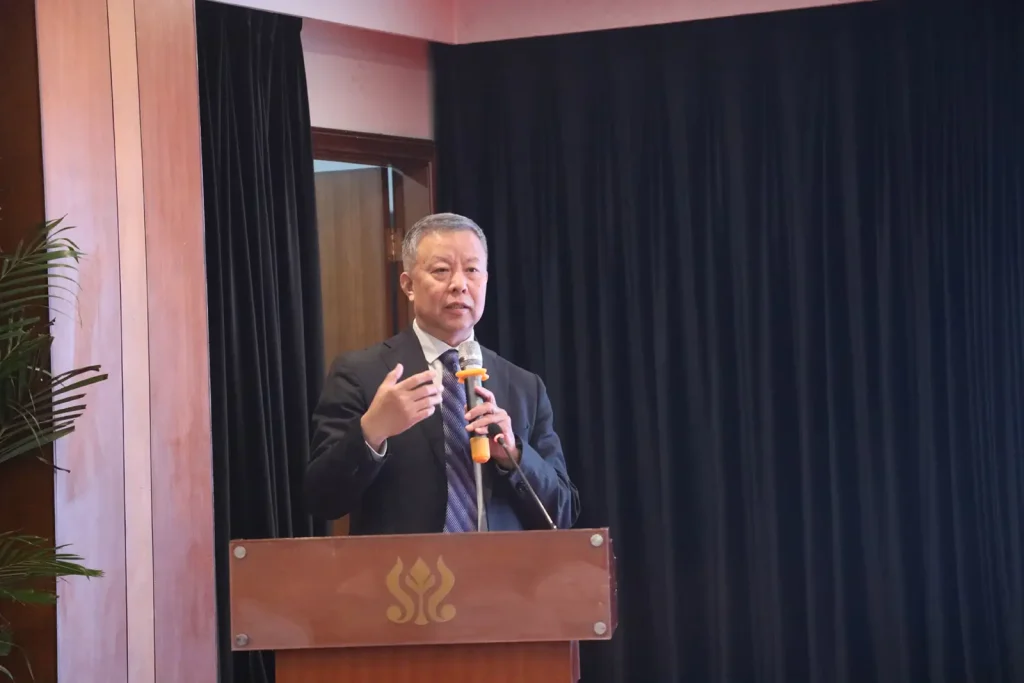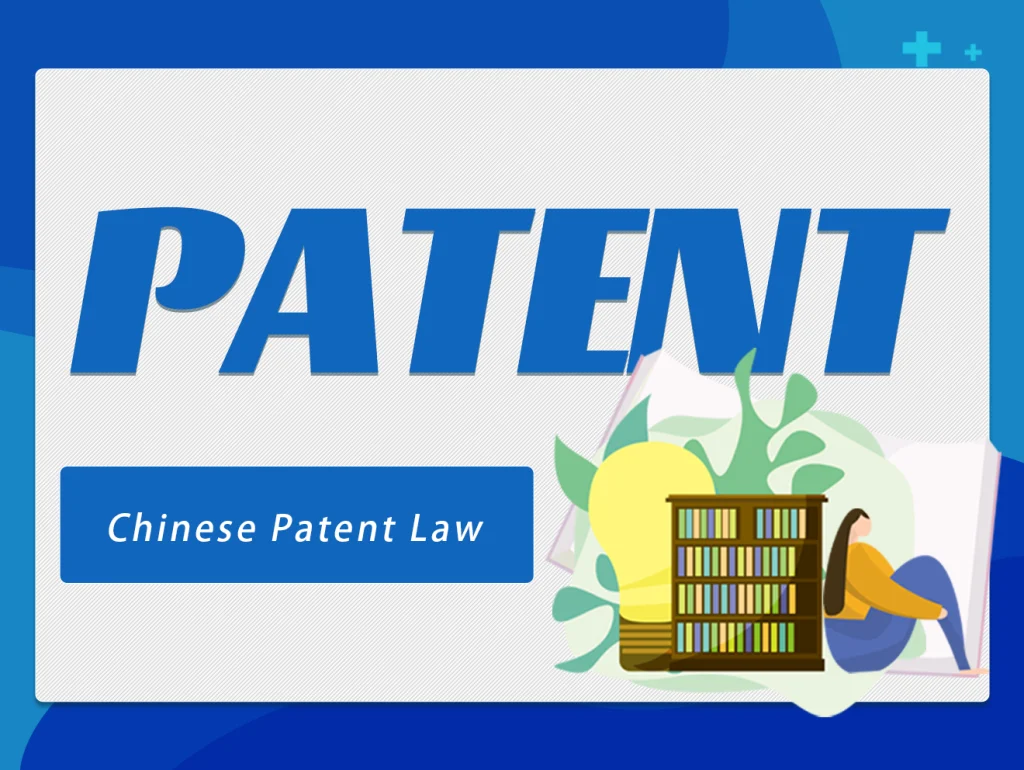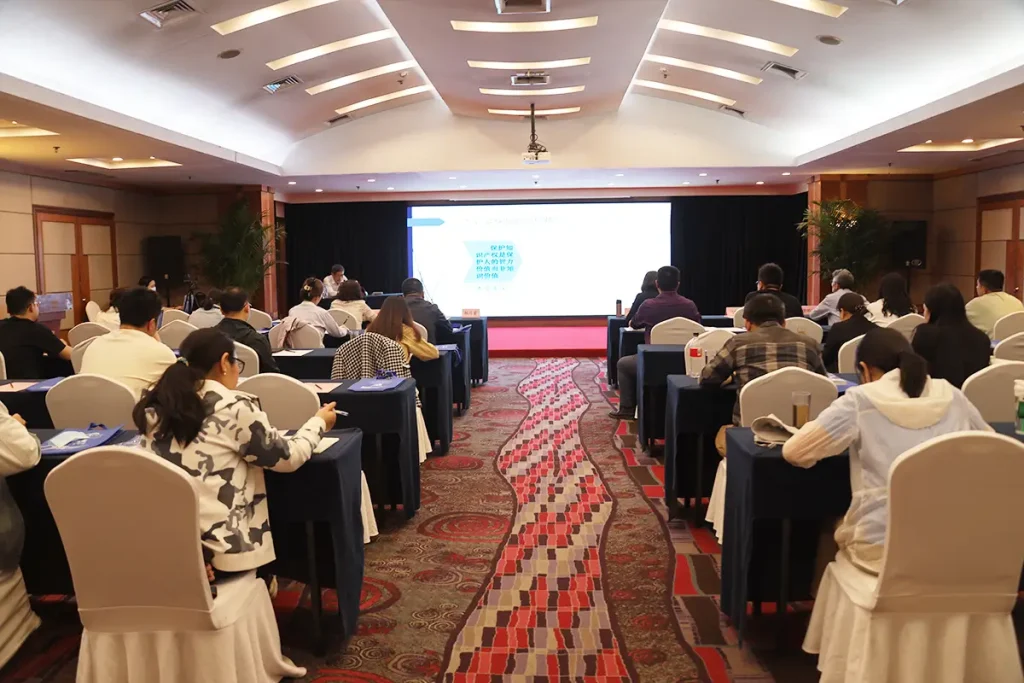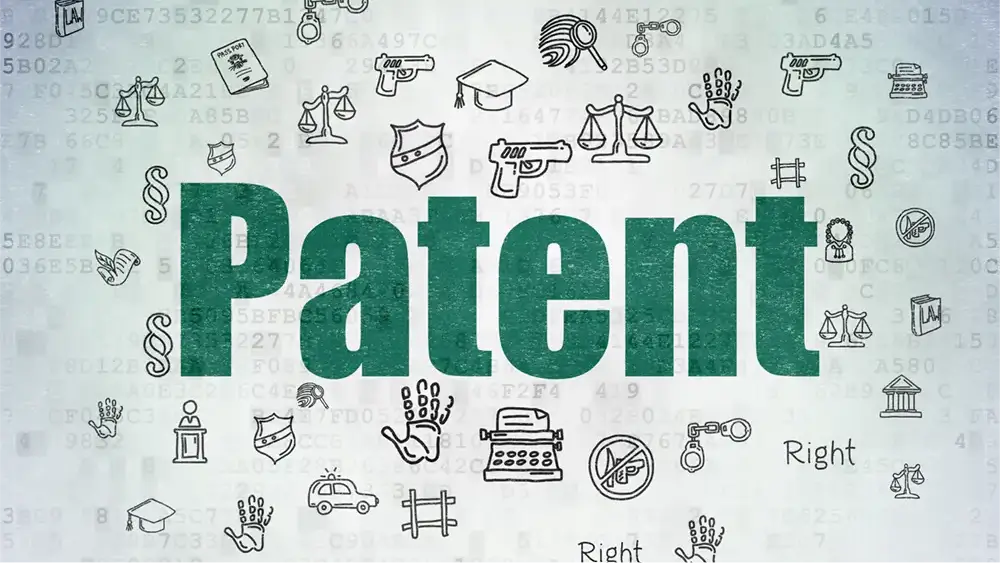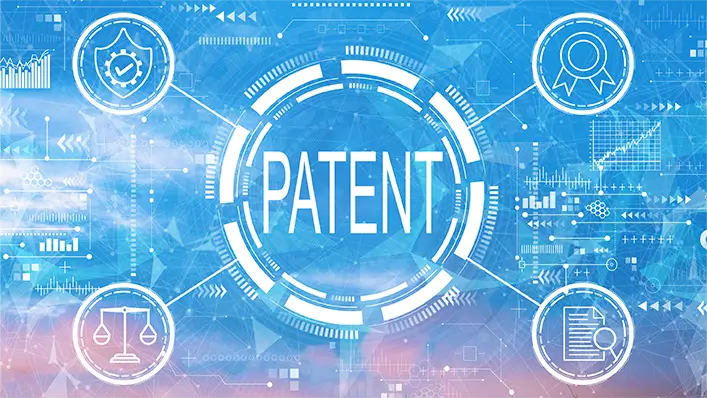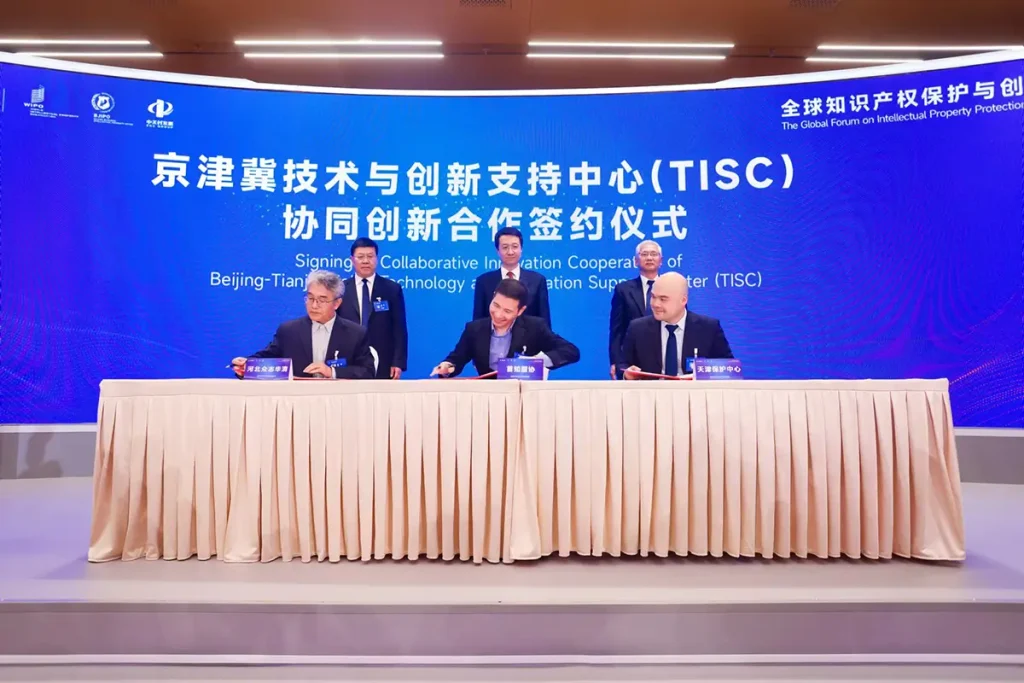China Patent Examination Guidelines (2023): Big Changes!
The “Implementing Rules for the Patent Law of the People’s Republic of China” and the “China Patent Examination Guidelines” (2023) issued on December 21, 2023 have come into effect on January 20, 2024.
In order to better guide China’s patent application and examination practices, the key contents of this revision of the examination guidelines are now introduced and interpreted.
1. Modifications to relevant regulations on patent application and examination procedures
1.1 Newly added provisions related to citation and inclusion
(1) When submitting a patent application for the first time, the priority of the earlier application should be claimed and a declaration of incorporation by reference should be made.
(2) A statement confirming the incorporation by reference and relevant documents should be submitted within two months from the date of first submission of the patent application or within the time limit specified by CNIPA. The content of the supplementary application documents shall be included in the copy of the earlier application document and its Chinese translation. Accordingly, the Examination Guidelines have deleted the expressions regarding reservations regarding the invocation of accession clauses in the PCT Implementing Regulations.
1.2 Modify the relevant provisions on priority
(1) New priority recovery
The time to request restoration of priority is within two months from the expiry date of the priority period and before CNIPA is ready for publication.
The documents submitted include a request for restoration of priority and other required documents, such as copies of prior application documents, documents proving the transfer of priority, etc.
The fees paid include rights restoration request fees and priority claim fees. Accordingly, the Examination Guidelines have deleted the expressions of reservations regarding the priority restoration provisions of the PCT Regulations.
(2) Addition or correction of new priority claims
The time for filing is within sixteen months from the priority date or four months from the filing date, and before CNIPA is ready for publication.
A request to add or correct a priority claim needs to be submitted.
For additional priority claims, a priority claim fee is required.
(3) Improve other priority procedures and requirements
The deadline for submitting copies of prior application documents and priority transfer certificates for invention and utility model patent applications has been relaxed, and “should be submitted within three months from the date of filing the subsequent application” is changed to “should be submitted on the priority date (required If there are multiple priorities, it shall be submitted within 16 months from the earliest priority date.”
1.3 Modify the relevant provisions on the grace period without loss of novelty
(1) Article 24 of the Patent Law adds a new grace period situation that does not lose novelty, that is, “when a national emergency or extraordinary situation occurs, the patent is disclosed for the first time for the purpose of public interest.” The review guide details relevant rules and clarifies that relevant certification materials should be issued by relevant departments of the people’s government at or above the provincial level.
(2) Adapt to the modification of Article 33, Paragraph 2 of the Implementing Rules of the Patent Law, and expand the scope of conference types of “academic conferences or technical conferences” during the grace period without loss of novelty.
For the situation of “exhibiting for the first time at an international exhibition sponsored or recognized by the Chinese government”, the scope of the issuing unit of certification materials has been expanded, and on the basis of the original “should be issued by the exhibition organizer”, “issued by the exhibition organizing committee” has been added “.
(3) In response to the situation of “others leaking the content without the applicant’s consent”, the procedures that the applicant should go through after receiving the notice from CNIPA are added to provide better protection for the applicant’s legitimate rights and interests support.
1.4 Provisions related to patent term compensation
The fourth revision of the Patent Law adds a new paragraph 2 of Article 42, which introduces an invention patent term compensation system and provides corresponding patent term compensation for unreasonable delays caused by reasons other than the applicant during the authorization process.
At the same time, a new paragraph 3 of Article 42 is added, which introduces a drug patent term compensation system to provide compensation for the patent term occupied by the review and approval of new drugs.
2. Modification of general provisions on substantive examination of invention patent applications
2.1 Interaction modifications have been made in accordance with the Patent Law and its implementation rules
The examination guidelines stipulate that the review of the principle of good faith will be added to the preliminary examination scope, reexamination and invalidation procedures, and the formulation of patent rights evaluation reports for the three types of patents, so as to form a comprehensive and systematic regulatory system.
2.2 Optimize and improve the substantive examination rules for invention patent applications
Regarding the cited documents in the background art, when the cited document is a patent document, it is stipulated that “the publication date of the cited patent document cannot be later than the publication date of this application”, which unifies the requirements for the publication date of cited Chinese and foreign patent documents.
In the novelty section of the Examination Guidelines, in the case of Article 24 (1) or (4) of the Patent Law, if another person learns the contents of the invention and then discloses it again, the provisions are the same as the corresponding first time. Disclosure is regarded as the same act, and the patent application will not lose novelty due to the above-mentioned re-publication act. In the inventiveness section of the Examination Guidelines, the rules for determining the closest prior art and determining the technical problem actually solved by the invention in the “three-step method” are improved and explained with examples.
2.3 In order to adapt to the development of new fields and new business formats and respond to the demands of innovative entities, the substantive review standards are adapted to be modified.
The Examination Guidelines stipulate that “information processing methods in which all steps are implemented by computers and other devices” do not fall within the diagnostic methods specified in Article 25, Paragraph 1, Item (3) of the Patent Law. In addition, the Internet has increasingly become an important channel for information dissemination. Among the relevant provisions on existing technology, the review guidelines provide separate provisions for materials existing on the Internet or other online databases, clarifying that the date of publication is generally based on the date of release, unless there is other evidence. Except for proving its public date.
3. China Patent Examination Guidelines Revise the Examination Standards for Invention Patent Applications Involving Computer Programs
3.1 Modifications to the drafting of claims
Topics that expressly allow writing computer program products. To clarify the claims of the computer program invention patent application, you can write the subject matter of the computer program product and add writing examples.
3.2 Modification of the review standards for artificial intelligence and big data objects
Add object review benchmarks for improving the internal performance of computer systems using artificial intelligence and big data algorithms, and add review examples.
Add review benchmarks for objects involving big data processing and add review examples.
3.3 Modification of inventiveness review criteria
Adds a creative review benchmark for algorithms that implement internal performance improvements in computer systems, and adds review examples.
Added creative review benchmarks for user experience improvements and revised review examples.
4. China Patent Examination Guidelines involve modifications to the examination standards for invention patent applications in the field of traditional Chinese medicine
4.1 Review standards for newly added protected objects of traditional Chinese medicine invention patents
It clarifies the circumstances under which patent rights cannot be granted in the field of traditional Chinese medicine, and also points out the common objects for which patent rights can be granted.
4.2 New review standards for descriptions and claims
It is clarified that the description of the names of Chinese medicinal materials in the instructions should enable those skilled in the field to confirm the Chinese medicinal materials; for inventions of traditional Chinese medicine compositions, the dosage ratios of each Chinese medicinal raw material should be clearly recorded in the instructions to meet the requirements of full disclosure.
4.3 New novelty review criteria
It is clarified that when an invention patent application or existing technology involves ancient units of weights and measures, it is necessary to pay attention to the similarities and differences between ancient and modern units of measurement to determine whether it is novel.
4.4 New review criteria for creativity
Regarding the inventiveness review of traditional Chinese medicine composition inventions, which account for the largest proportion of invention patent applications in the field of traditional Chinese medicine and have the most characteristics of traditional Chinese medicine, the review principles and methods are clarified.
4.5 New review criteria for practicality
It is clarified that inventions involving doctors’ prescriptions and methods of obtaining traditional Chinese medicine raw materials from animals using surgical methods are not practical.
5. Modifications to the China Patent Examination Guidelines on the Provisions Related to the Examination of Reexamination and Invalidation Requests
5.1 Implement the provisions of the Patent Law and its Implementing Rules
New regulations have been added on the review of invalidation request cases involving the early resolution mechanism for pharmaceutical patent disputes, and the content of partial designs and domestic design priority in the invalidation procedures has been added.
5.2 Optimize and improve existing system regulations
Clarify the rules for patent owners to voluntarily declare to give up patent rights, and improve the principles for party disposition in the invalidation procedure.
5.3 Innovative review models and review rules
Adapt to technological development and situation changes, and clarify oral trial methods such as offline trials, online trials, and a combination of offline and online trials.
6. Modifications to China Patent Examination Guidelines on Preliminary Examination of Design Patent Applications and Relevant Regulations on International Design Applications
6.1 Modifications related to the preliminary examination of design patent applications
(1) Add review regulations related to partial designs in the review guidelines. It is clear that the indivisible parts of the product can obtain patent protection through partial design.
(2) Make adaptive adjustments to the review regulations for product designs involving graphical user interfaces, clarifying that applications for product designs involving graphical user interfaces can be submitted in the form of overall product designs or partial designs.
(3) Combined with the characteristics of the design, refer to the national priority system for inventions and utility models, and add a section “Requesting National Priority” to the examination guidelines. It is specifically clarified that when the applicant of the subsequent application is inconsistent with the applicant recorded in the earlier application, documents proving the transfer of priority shall be submitted within three months from the date of the later application.
(4) Article 50 of the Implementing Rules of the Patent Law expands the scope of preliminary examination of design patent applications and further clarifies the examination guidelines.
(5) For surfaces in three-dimensional products that do not involve design points, you can submit an orthographic view or a three-dimensional view showing the above-mentioned surfaces.
6.2 Modifications to relevant contents of international design applications
(1) Add relevant provisions on the transmission conditions and procedures for international design registration applications, entrustment of international design applications, divisional applications, domestic announcements and other procedures, as well as relevant regulations on payment procedures for international design registration application fees.
(2) The international design application designating China published by the International Bureau has the same effect as the design patent application filed in China. CNIPA will examine the international design application for obvious substantive defects in accordance with domestic laws and regulations. Provisions are made on priority, divisional applications and disclosure without loss of novelty: it is clarified that the deadlines for submitting copies of earlier application documents, voluntarily filing a divisional application to CNIPA, and submitting relevant certification documents for disclosure without loss of novelty are all from The calculation starts from the date of publication of the international application; a divisional application filed in accordance with the examination opinion shall be filed at the latest within two months from the date of domestic announcement of the original application; if the international design application is deemed to have not claimed priority, it will not be restored.
7. Modifications of China Patent Examination Guidelines on Application Procedures and Affairs Processing
7.1 Improve the formal requirements for patent applications
It is clarified that when a foreign applicant without a habitual residence or business office in mainland China or an applicant from Hong Kong, Macao and Taiwan applies for a patent or handles other patent matters alone, or jointly applies for a patent or handles other patent matters as a representative with other persons, he or she must entrust an entrustment agent For patent agencies, certification documents such as “non-service invention certificate”, “habitual residence certificate”, “regular place of business certificate” and “applicant qualification certificate” will be cancelled.
7.2 Optimize the procedure requirements for change of bibliographic items
(1) If the same bibliographic item of multiple patent applications is changed, and the content of the change is exactly the same, the bibliographic item changes are allowed to be processed in batches without the need to submit them one by one.
(2) Simplify the supporting documents required by the applicant (or patentee) to request a name change.
(3) Regarding the procedure for changing the inventor due to omission or incorrect filling, it is clearly stipulated that the time for submitting such a change is “to be submitted within one month from the date of receipt of the acceptance notice”, and it needs to be included in the supporting documents. Indicate the reason for the change, and make a statement confirming that the inventor after the change has made a creative contribution to the substantive features of the invention.
7.3 Clarify billing standards
It is clarified that various fees should be settled in RMB. If the party pays the patent fee in foreign currency, the settlement shall be based on the exchange rate on the day when the bank settles the fee to the CNIPA account, and the settlement date shall be the payment date.
7.4 Optimize process deadlines
(1) It is clarified that a request for delayed examination can be made for a utility model patent application, and a request for a delayed examination period for a design patent application can be made in units of months. For the three types of patent applications, a provision has been added that the request for delayed examination can be withdrawn.
(2) Clarify the time limit for confidentiality review of foreign patent applications.
(3) For an international application published internationally in Chinese, the provisional protection starts from the earlier of the international publication date and the CNIPA publication date.
7.5 Strengthen patent services
(1) Add detailed regulations for the patent open licensing system.
(2) Further clarify the requirements for requesting entities, timing, and time limits for patent rights evaluation reports.

Shanghai Bulu Intellectual Property Agency LLP
Tel:+86 (0)21 5833 8320
Mail:tisc@joinhua.com
Add:No.199 JinXiang Rd. Pudong, Shanghai, China
© 2025 Shanghai bulu Intellectual Property Firm. Created with ❤ using WordPress and Kubio

